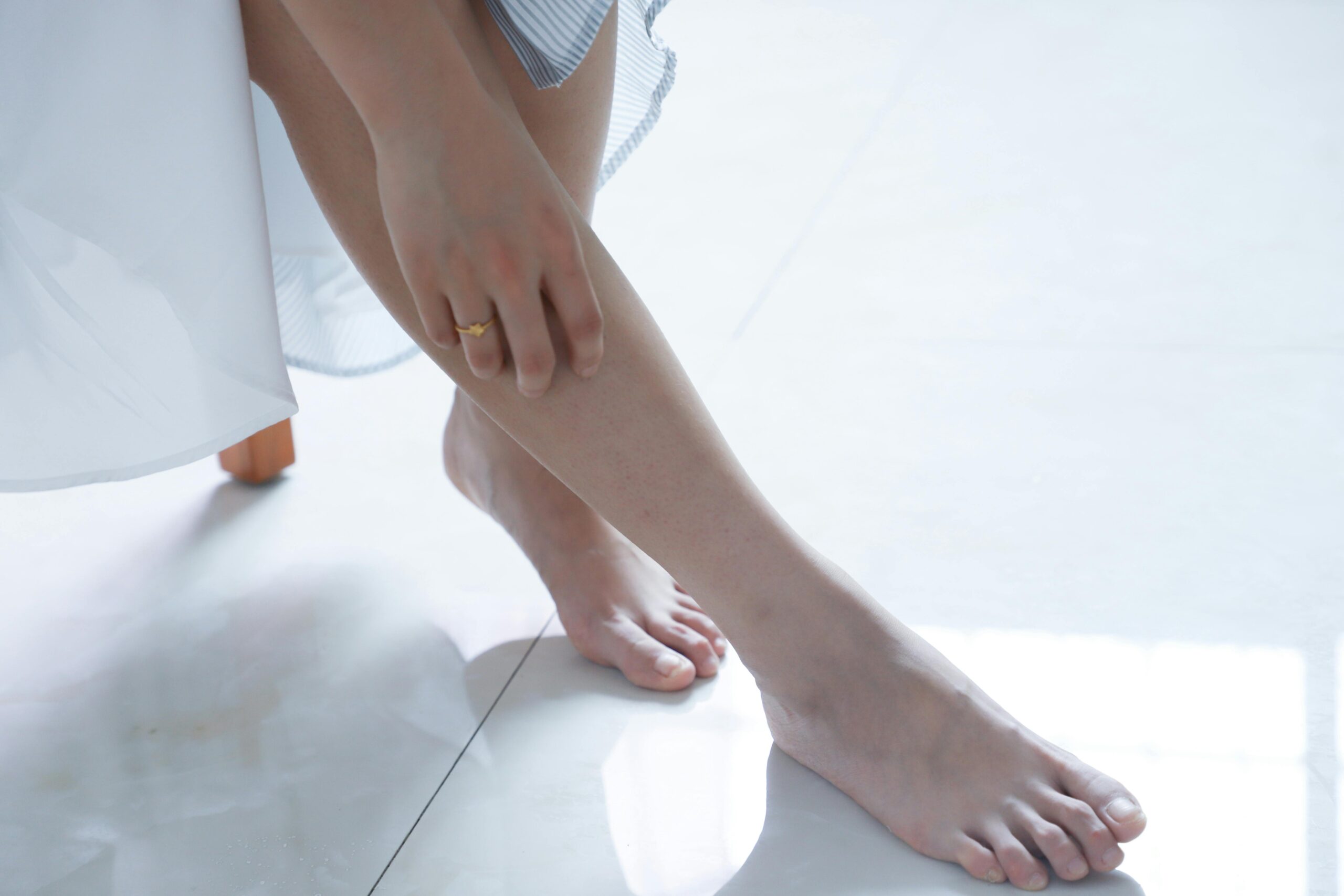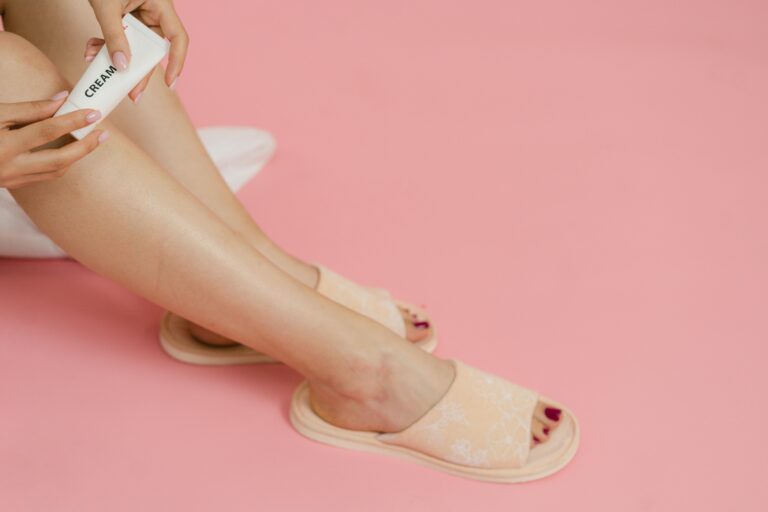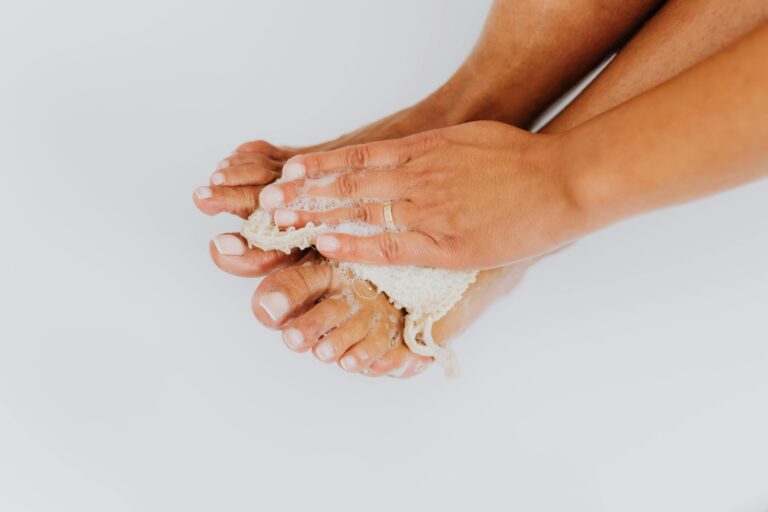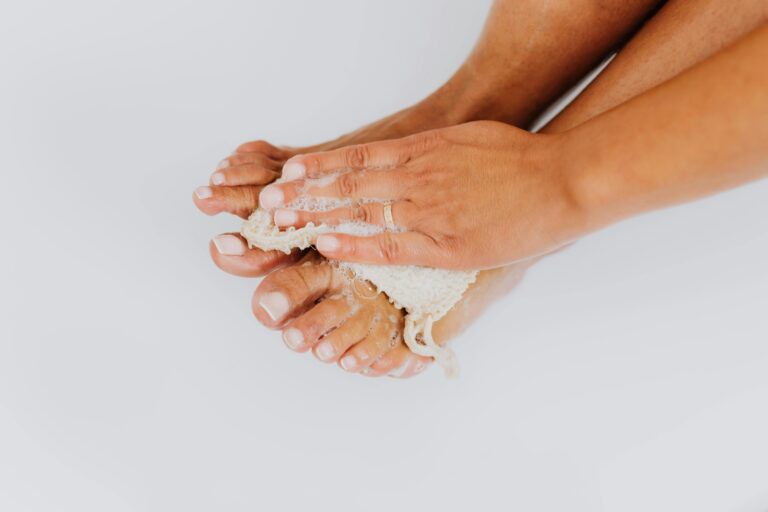Having soft, smooth feet is more than just a cosmetic concern—it’s essential for overall foot health and comfort. Whether you’re preparing for sandal season or just want to pamper your feet after a long day, achieving beautifully smooth feet doesn’t require a trip to the spa. With a few simple steps and regular care, you can transform your feet at home into a soft, smooth canvas.
This guide will walk you through the best practices for foot care, including exfoliation, hydration, and protection, to help you achieve the feet you’ve always desired.
1. Start with a Soothing Foot Soak
A soothing foot soak is the first step to softening your feet and preparing them for further treatment.
Ingredients for a Foot Soak:
- Warm water
- Epsom salts or baking soda
- A few drops of essential oil (e.g., lavender or peppermint) for relaxation
Steps:
- Fill a basin with warm water, ensuring it’s comfortable to the touch.
- Add 1-2 tablespoons of Epsom salts or baking soda and mix well.
- Add a few drops of essential oil if desired.
- Soak your feet for 15-20 minutes to relax and soften the skin.
A foot soak helps to relax tired feet, soften rough skin, and prepare your feet for exfoliation and moisturizing.
2. Exfoliate Regularly
Exfoliation is crucial for removing dead skin cells and revealing fresh, smooth skin. Regular exfoliation prevents calluses and rough patches.
Exfoliation Methods:
- Pumice Stone: Gently rub a pumice stone on wet feet to remove dead skin.
- Foot Scrubs: Use a commercial foot scrub or a DIY mixture of sugar and olive oil. Apply it in circular motions to scrub away dead skin cells.
- Exfoliating Socks: These are pre-soaked in a solution that helps slough off dead skin over a few days.
Steps for Using a Pumice Stone:
- After soaking your feet, gently rub the pumice stone on rough areas.
- Focus on heels and balls of the feet.
- Rinse and pat feet dry before moisturizing.
3. Moisturize Daily
Moisturizing is key to maintaining soft, smooth feet. Regular application of a good foot cream or lotion keeps the skin hydrated and supple.
Best Moisturizers for Feet:
- Foot Creams: Look for creams containing urea or lactic acid for deep hydration.
- Natural Oils: Coconut oil, shea butter, and almond oil are excellent natural moisturizers.
Steps for Effective Moisturization:
- Apply moisturizer liberally to clean, dry feet.
- Pay special attention to heels, soles, and between toes.
- For best results, apply before bedtime and wear cotton socks overnight to lock in moisture.
4. Address Common Foot Problems
To achieve the best results, address common foot issues such as calluses, cracked heels, and fungal infections.
Calluses:
- Regular exfoliation and moisturizing can help manage and reduce calluses.
- Use a callus remover or foot file for stubborn areas.
Cracked Heels:
- Apply a thick layer of foot cream containing shea butter or petroleum jelly to cracked heels before bed.
- Use a foot file to gently smooth out the cracks.
Fungal Infections:
- Keep feet clean and dry to prevent fungal infections.
- Use antifungal powders or creams if needed, and consult a healthcare provider if problems persist.
5. Protect Your Feet
Protection is essential to maintain the health and appearance of your feet. Proper footwear and hygiene play a significant role in foot care.
Footwear Tips:
- Choose Well-Fitting Shoes: Avoid tight shoes that can cause blisters and calluses.
- Opt for Breathable Materials: Wear shoes made from materials that allow your feet to breathe.
- Alternate Shoes: Avoid wearing the same pair every day to give your shoes a chance to air out.
Foot Hygiene Tips:
- Wash feet daily with mild soap and warm water.
- Dry feet thoroughly, especially between toes, to prevent fungal infections.
Conclusion
Achieving soft, smooth feet at home is entirely possible with consistent care and attention. By incorporating these steps—soaking, exfoliating, moisturizing, addressing common foot issues, and protecting your feet—you can enjoy healthier, more beautiful feet without the need for professional treatments. Regular maintenance and the right products will keep your feet looking and feeling their best, making them ready for any occasion. Treat your feet with the care they deserve and enjoy the benefits of soft, smooth skin every day.
Frequently Asked Questions (FAQs)
1. How often should I exfoliate my feet?
Exfoliate your feet 1-2 times per week to remove dead skin and prevent calluses. Over-exfoliating can lead to irritation, so be sure to adjust frequency based on your skin’s needs.
2. Can I use regular body lotion on my feet?
While body lotion can be used on your feet, foot creams are specifically formulated to address foot issues like dryness and calluses. For best results, use a product designed for feet.
3. How can I prevent dry, cracked heels?
To prevent dry, cracked heels, maintain a regular moisturizing routine, wear supportive footwear, and avoid walking barefoot on hard surfaces. Apply a thick moisturizer to your heels before bedtime and consider using a foot file to keep the skin smooth.
4. Are there natural remedies for foot care?
Yes, natural remedies include using coconut oil, olive oil, or aloe vera gel as moisturizers. Epsom salt foot soaks can also help relax and soften feet. Always ensure to patch test natural products to avoid any adverse reactions.
5. What should I do if I have persistent foot problems?
If you have persistent foot problems such as severe calluses, cracks, or infections, consult a healthcare provider or a podiatrist. They can offer professional advice and treatment options tailored to your specific needs.



